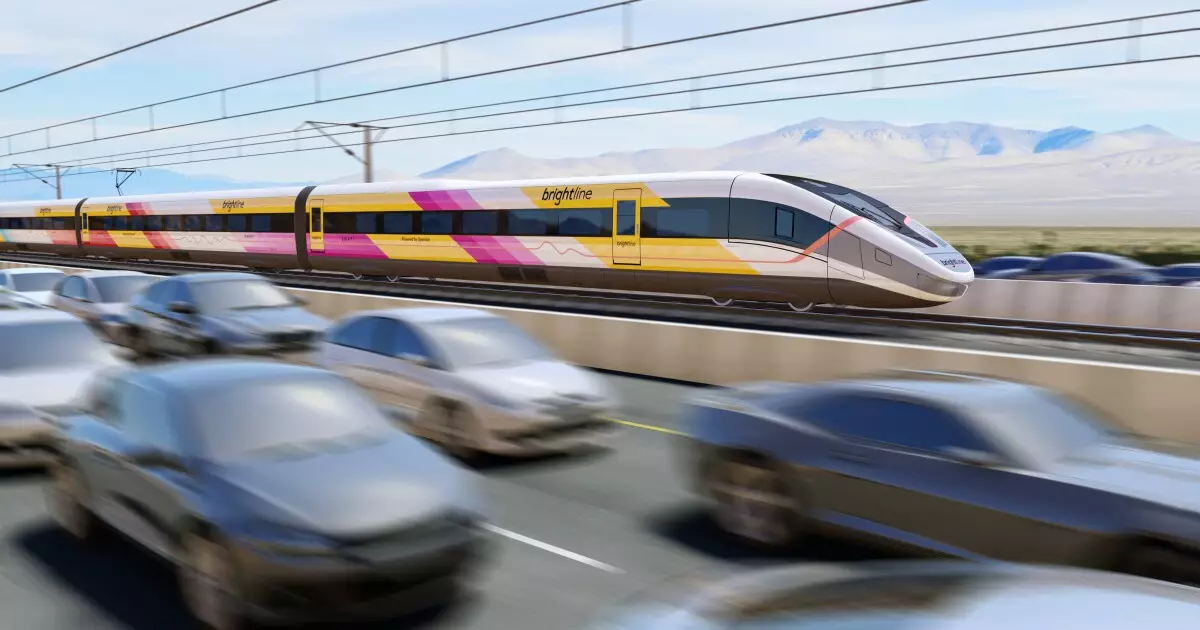Brightline West, an ambitious initiative to establish a high-speed electric train service between Las Vegas and Southern California, is embarking on a significant financial endeavor with the planned issuance of $2.5 billion in unrated private activity bonds (PABs). This is a pivotal move for a project estimated at a staggering $12.4 billion, highlighting the momentum and ambition behind revitalizing America’s transportation infrastructure. The funds raised through this bond issuance are intended to refinance existing obligations, fund future construction, and bolster reserve accounts crucial for the project’s financial health.
With the potential to be one of the largest unrated transactions within the municipal market this year, Brightline West’s move reflects the growing interest in high-speed rail as a viable alternative to traditional transportation methods. As traffic congestion worsens and environmental concerns rise, high-speed rail presents a compelling case for sustainable travel, capable of converting a six-hour drive into a drastically shorter two-hour journey.
Financial Structure and Challenges
In addition to the PABs, the company must secure a $6 billion bank facility within 180 days following the bond issuance. This facility would rank senior to the PABs, providing a safety net for investors. Notably, this arrangement may also include a $1.5 billion tax-exempt component, alongside additional equity financing. The financial landscape is challenging, with the risk of mandatory redemption at a plan value of 101 looming if adequate financing does not materialize, revealing inherent risks to investors.
The necessity for additional financing underscores the strategic complexity of large-scale infrastructure projects, particularly in their early stages. The financial commitments involved require robust forecasting and investor confidence, as failing to meet these obligations could have significant repercussions for stakeholders involved.
Future Vision and Anticipated Impact
The vision for Brightline West extends beyond simple transportation; it seeks to redefine how Americans travel long distances. Set to operate on a 218-mile stretch primarily alongside the I-15 corridor, the electric trains are designed to reach speeds exceeding 186 miles per hour. This advance in travel technology is not just about reducing time; it promises a cleaner alternative to road and air travel, aligning with broader environmental goals.
The company’s projections indicate an ambitious ridership forecast of 8.6 million passengers annually by 2031, translating to an expected revenue of $1.4 billion in its first full year of operations. Such figures reflect a belief in the train’s appeal, particularly among an increasingly eco-conscious public. However, these aspirations rest on the successful execution of the project and the ability to adapt to the evolving landscape of public transportation needs.
The initiative has received encouragement from the California Infrastructure and Economic Development Bank, which will facilitate the issuance of $1.875 billion in bonds, while Nevada’s Department of Business and Industry will support an additional $625 million. The backing of governmental and regulatory bodies is critical for the success of high-stakes projects such as Brightline West, reinforcing their legitimacy and facilitating access to financial markets.
The Biden administration’s favorable stance toward high-speed rail projects also adds a layer of invaluable support which could create pathways for further federal funding and investment in infrastructure. While the project enjoys bipartisan backing, it is not without contention; criticisms of California’s publicly funded rail lines highlight the complexities and challenges associated with public infrastructure initiatives.
Brightline West symbolizes a significant shift in the approach to public transportation in the United States. By leveraging private investment and innovative financing structures, the project aims to deliver a dynamic, eco-friendly alternative to traditional travel routes. However, the project’s success hinges on not only meeting ambitious financial targets but also adapting to the public’s evolving transportation preferences. A concerted effort from stakeholders, combined with strategic planning and execution, will be essential to transforming this vision into reality by the projected completion date of December 2028. The future holds great promise for this pioneering service, representing a vital link in revitalizing America’s transportation infrastructure.


Leave a Reply